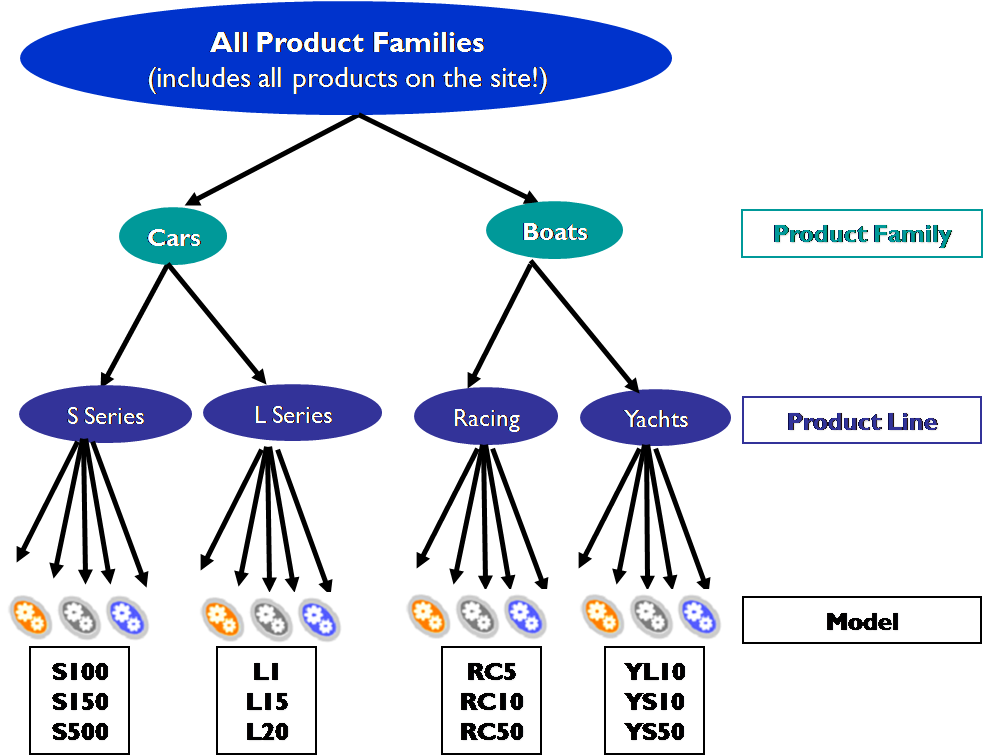Overview
Products in Oracle CPQ are structured in a hierarchy. The first step in product definition is to create Product Families. Product Families are broad classifications of products, typically based on industry standards, rather than a single company standard. Product Family classifications could take into consideration how you want to merchandise your products, or how you want users to navigate through the catalog.
All of your Product Lines could belong to a single, all-encompassing Product Family, or they could be split up into several Product Families. For example, you can create general Product Families, like ”pumps”, or you can create more specific Product Families, like ”centrifugal pumps” and ”steam pumps”. Depending on the Product Families created, some catalog page templates and home page flow templates may be more appropriate to use than others. For more information on template choices see the topic Home Page Flows.
Product Line attributes and Model attributes capture the general characteristics of the product. By default, Product Families and Product Line/Model attributes are created in an inactive, pending, state. This enables you to create Product Families over time, and then deploy them when they are complete.
Deployed Product Families appear on the Commerce side and in Supported Products Administration, where Product Line and Model data can be uploaded.
Notes
It is best practice not to define anything at the Model level unless absolutely necessary. This reduces the maintenance required to update attributes, rules, and flows in multiple places each time a change is made.
One possible approach is to define only one Product Line and Model per product family and use configuration attributes to store the Product Line and Model name instead. This approach will reduce the number of rules that you need to maintain, but those few rules can be much more complicated than if you were to explode your products into the standard hierarchy. Choose wisely.
Typically, you will want to define attributes and rules at the highest level possible. The Product Family level is the most ideal.






